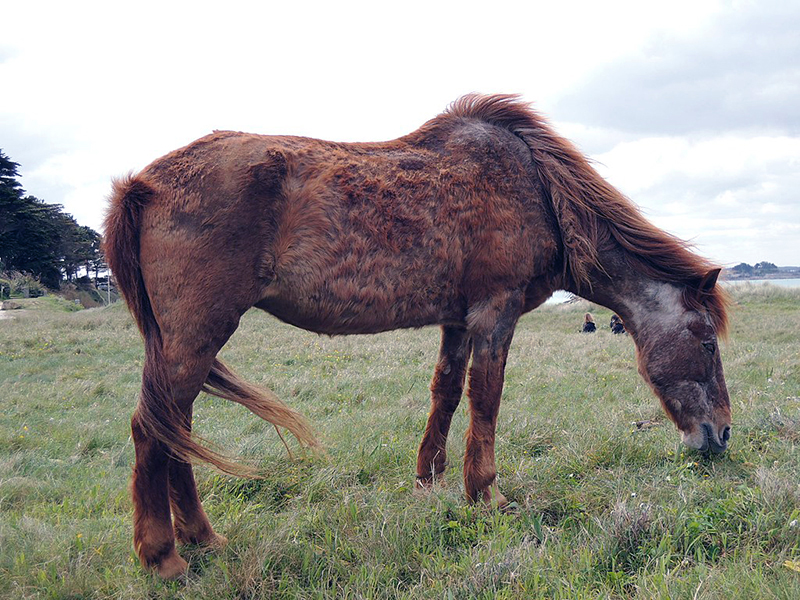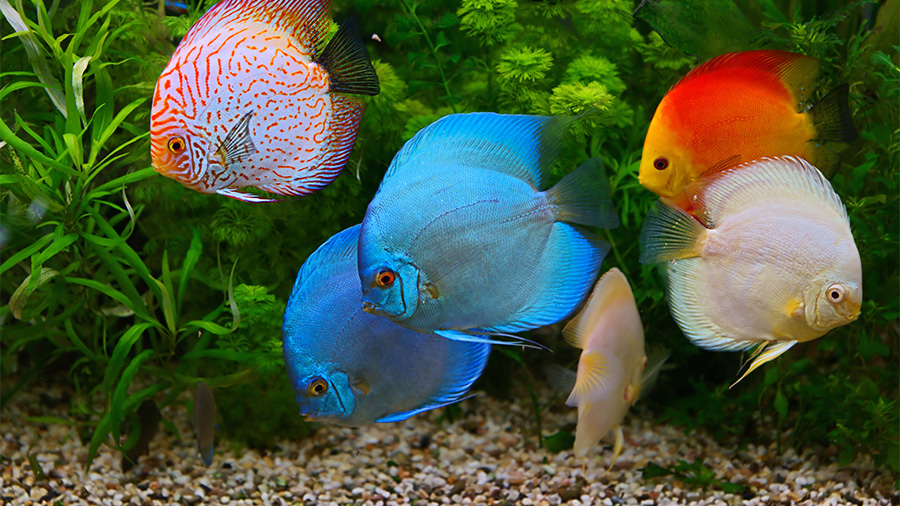A long curly coat that does not shed properly and loss of muscle mass are classic signs of pituitary pars intermedia dysfunction (PPID). Dr. Sandra Yucupicio, an equine internal medicine resident at the University of Illinois Veterinary Teaching Hospital in Urbana, sheds some light on the condition.
What Is PPID?
PPID, formerly referred to as “equine Cushing’s disease,” commonly affects horses and ponies age 15 years and older. The disorder can occur in any breed, according to Dr. Yucupicio, but Morgans and ponies seem to be predisposed.
“As the name states,” explains Dr. Yucupicio, “PPID affects the pituitary pars intermedia, causing hyperplasia and hypertrophy, generating and enlargement of the pituitary.” In layman’s terms, the middle portion of the pituitary gland in the horse’s brain becomes overactive and enlarged. This overactivity is responsible for the clinical signs associated with PPID.
“There are multiple clinical signs, such as hypertrichosis (increase in hair length and lack of shedding), poor hair coat, muscle atrophy or wasting, weight loss, susceptibility to infections, and lethargy,” says Dr. Yucupicio.
How Is PPID Diagnosed?
To diagnose PPID, a veterinarian performs a blood test to check the level of adrenocorticotropic hormone (ACTH). For this test, a blood sample is collected and centrifuged to separate the cells from the fluid portion of the blood. Elevated ACTH indicates that PPID is a likely diagnosis. If the horse is suspected of having equine metabolic syndrome (EMS) or insulin dysregulation, insulin levels will also be tested.
How Is PPID Treated?
Treatment for PPID consists of daily oral administration of a medication called pergolide. Other measures helpful for managing the condition include diet management, dental and hoof care, and deworming.
“Body clipping during warm weather is important to avoid excessive sweating,” says Dr. Yucupicio.
Horses with PPID will benefit from a pelleted feed diet. This diet is easier to eat for older horses that often have dental issues and is more digestible, which will help horses with muscle wasting gain weight. Horses with PPID with concurrent insulin dysregulation or EMS have an increased risk for laminitis.
Another common therapy is the use of grazing muzzles and/or limited turnout time. Dr. Yucupicio explained that “Limiting pasture/grass access during summer or fall is recommended to decrease sugar intake. A grazing muzzle could be used to limit grass access, therefore limiting sugar intake. Exercise is also recommended for horses without laminitis.”
Can Horses with PPID Have Good Quality of Life?
PPID affects up to one-fourth of horses, according to Dr. Yucupicio. Although no sure-fire preventive measures exist (“unless you can find a way to prevent aging”), horses with PPID can have a good outlook. The keys involve diet, medication, and other management strategies according to the individual horse’s needs.
By Alaina Lamp
Featured photo from Abujoy, CC BY 3.0, via Wikimedia Commons.




